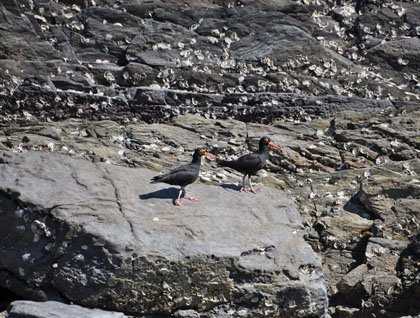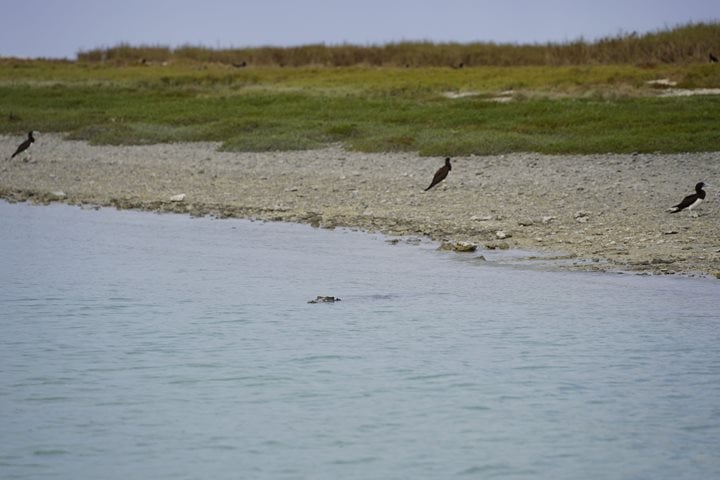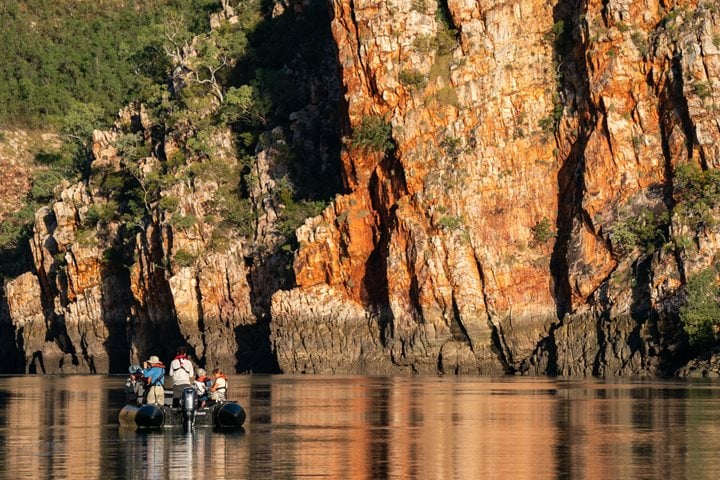Day two of the northbound leg of the Kimberley trip had the National Geographic Orion thread her way through the aptly named island chain called ‘the Narrows’ to enter Talbot Bay and anchor between Slug Island and the McLarty Ranges. Upon arrival the National Geographic Orion and her guests were greeted by some of the locals – two large tawny nurse sharks which swam right up to the marina deck, entertaining everyone with their beauty and natural grace.
One of the reasons to visit Talbot Bay was to view the spectacle of the Horizontal Waterfalls, locally known as the ‘Horries.’ This natural phenomenon is caused by tidal waters being trapped between the McClarty Ranges and Talbot Bay, with only a narrow gorge for the tide to rush through. This causes a difference in the height of the water between inside and outside of the gorge, causing the water to back up and produce the unique Horizontal Waterfall. Guests went on a Zodiac tour to view the ‘Horries’ from a safe distance and to experience the flow as the tide rushed out through the narrow aperture. There were plenty of opportunities for photographs and discussions about the unique combination of geology and weathering that created the Horizontal Waterfall before the group headed off to continue the Zodiac tour. A brahminy kite and a pair of sooty oystercatchers added to the wildlife sightings as the Zodiacs headed upstream.
A short journey from the Horizontal Falls is Cyclone Bay, named because it provides a sheltered anchorage for vessels during the cyclones and storms experienced in the Kimberley during the wet season. There are some amazing geological features in Cyclone Bay and the gorge that joins it to Talbot Bay, with high bluffs of Kimberley sandstone that have been pushed around by the incredible forces of tectonic movement. This area is one of the best places to see short-eared rock wallabies, but today brief glimpses were had of only two animals as they scampered surefooted across the sandstone and into one of the many crevasses in the rock.
The journey upstream had us stopping and photographing a Kimberley rose, with its bright red flowers providing a splash of color in the harsh landscape. This deciduous tree also gave an insight into some of the adaptations that plants have to survive in this area, dropping all of its leaves during the dry season to conserve moisture. On the same hillside as the Kimberley rose was a eucalyptus tree covered in native mistletoe, which is a parasitic plant that relies on its host tree for nutrients.
Both the deciduous Kimberley rose and the mistletoe provided us with examples of the amazing ways the plants and animals have adapted to this harsh but beautiful land.







